PDF of this article (313 KB)
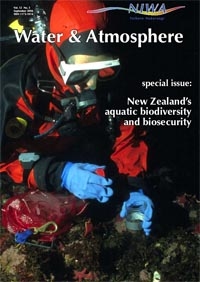
Don Robertson Mary de Winton
Scientific data collected on New Zealand’s feshwater fish, invertebrates, algae and aquatic plants can now be located with the click of a mouse.
NIWA has just completed an innovative web-based data-management project, funded in part by the Department of Conservation’s Terrestrial & Freshwater Biodiversity Information System (TFBIS) Programme.
Many decades of research in New Zealand have produced large amounts of environmental and biodiversity data. Though these data may have long-term value, often they have not been managed in ways that make them accessible for future research. This also impairs their usefulness with emerging requirements for natural resource, environmental, biodiversity, or biosecurity management decisions.
The Freshwater Biodata Information System (FBIS) integrates four broad categories of freshwater biodiversity and biosecurity data held by NIWA. These are fish (data collected since 1920), invertebrates (since 1967), submerged macrophytes (since 1981 – see below), and bryophytes, algae, and diatoms (since 1980).
By integrating these dispersed datasets using data warehousing techniques, we are able to improve data management, achieve better application of standards, improve interoperability within and across institutions, enhance data access, and create better links with a range of other data types. With FBIS you can search by taxon (species, etc.), by all associated sample data (such as date, sampling technique), and by location (catchment, river reach, map polygon).
A tool for sharing data
While FBIS has been created using data held by NIWA, similar datasets exist in a number of institutions, including universities, regional councils, museums, and other research providers. FBIS is available for anyone in New Zealand to use as a data repository to house and access freshwater biodata of high quality. Already, other data holders are seeing the value of placing their data in FBIS.
Many datasets collected for one study have potential for other future uses. FBIS will help recycle and reuse New Zealand’s freshwater biodiversity and biosecurity data by making them easier to locate and access. With the development and application of powerful GIS-based web-mapping functionality, FBIS can help answer new research questions and improve management decision-making tools, and thereby further the goals of the New Zealand Biodiversity Strategy.
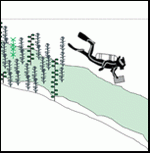
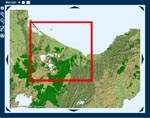
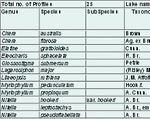
Freshwater plant records in FBIS
Two types of data available in FBIS are records of macrophytes (aquatic plants) and of pest plants in freshwater habitats.
Macrophyte records are gathered by NIWA researchers using a scuba survey technique (see “Submerged plant data: answering the what, where and why”) that notes information about each plant species encountered in a waterbody. Currently there are macrophyte records for 206 lakes, many surveyed more than once, totalling almost 18,000 records. In the future, any agency will be able to contribute a verified macrophyte record with a spatial reference and date to FBIS.
Pest plant data comprise approximately 3000 records of 47 aquatic weed species, collated from sources including National Herbaria, NIWA, DOC and regional council records.
Basic information on macrophytes and pest plants that can be retrieved from FBIS using the “common search” feature includes species distribution maps for New Zealand or a designated area, or a list of locations where a species has been recorded. You can also extract a list of the species recorded at a location, for example a lake, including a table of information on macrophytes that displays depth ranges and other summary information. “Advanced search” presents much more comprehensive options.
Easy access to descriptions of vegetation resources (for example, native character, rare plant presence, potential weed problems, changes over time) will help agencies charged with managing and reporting on the condition of waterbodies. Information on pest plant distribution, invasion dates and pest status (for example, if the plant is subject to regional or national pest management strategies) will allow better assessments of local weed risk, and enable proactive management of aquatic weeds.
Adding FBIS to your tool set
You can see FBIS in action at fbis.niwa.co.nz. If you are interested in adding your freshwater data to the system, contact Don Robertson, General Manager, Biodiversity, Biosecurity & Information Systems (ph 04 386 0519, [email protected]).
Freshwater Information New Zealand
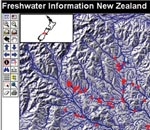
NIWA is also in the third year of developing a broadly defined freshwater informatics system called Freshwater Information New Zealand (FINZ). This new system will use NIWA’s spatially sophisticated River Environment Classification (REC) framework to integrate biological, catchment, climate, hydrological, land-use, and physical data for all of New Zealand’s streams, rivers, lakes, wetlands and groundwater. FINZ also promises leading-edge predictive flow modelling and links to a range of tools and published research
FBIS is one of several databases that will be accessible through FINZ. Users will have the option of linking biodata with associated environmental data as tables or map layers, and will also have web access to enhanced GIS mapping functionality.
Don Roberston is based at NIWA in Wellington; Mary de Winton is with NIWA in Hamilton.
